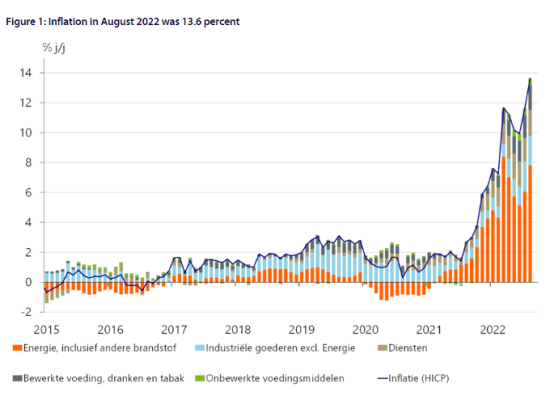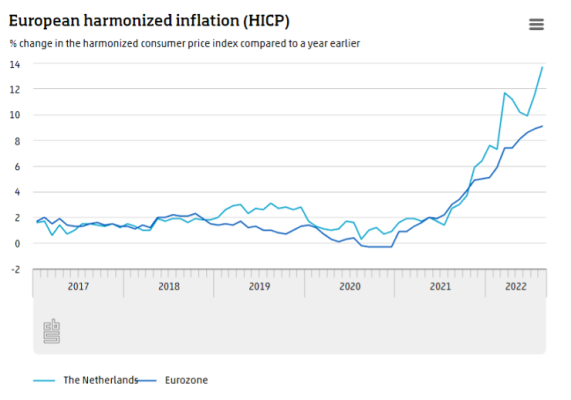‘I might have to join the gym, just so I can enjoy hot showers,’ saysid Jose upon receiving his renewed energy contract with the increased tariffs – five times as much as he was paying before. Despite his considerable income, he and his partner have stopped taking long showers, they no longer use the clothes dryer and run the washing machine only after 11 at night, when energy tariffs are lower. He has even gone to the extent of unplugging all standby electrical appliances such as his coffee machine and his PlayStation.
Micha has stopped using his electric car and gone back to using his old petrol-fueled, carbon-emitting car. If weather permits, he rides his bike to work. Even though they are a six-figure income household, he and his partner no longer shop at Albert Heijn.
Micha and Jose are not alone in their worries about inflation, making them cut costs wherever possible. The entire country Netherlands, as well as Europe, if not the whole world, are feeling the effects of the Ukraine war on their wallets.
The month of August recorded the sharpest spike in inflation – 13.6%, meaning that the average consumer price level in August was 13.6 percent higher than in the same month a year ago.
Anyone who was expecting any sort of respite from the ever-increasing prices will be sorely disappointed, as Minister of Foreign Affairs Wopke Hoekstra tried to prepare minds for a long war, in his speech delivered earlier this month at the opening of the academic year at Leiden University.
While minister Hoekstra tried to deliver the bad news in as positive a way as possible, what is of more concerns for Dutch citizens is that the inflation rate in the Netherlands is the highest of all EU countries.
The European inflation is driven by the high energy prices. With Russia shutting off the Nordstream gas supplies indefinitely, the gas prices may rise sharply, to more than 300 euros per megawatt hour.
Although the Netherlands has been able to offset lower Russian gas supplies by additional imports from Norway, the UK and the US, but consumption will have to fall in case of a harsh winter. Many schools have already lowered the thermostat by more than 2 degrees and ask parents to dress their children in warmer clothes.
The high inflation is not limited to energy, but also other items, including food, consumer goods and of course transportation costs. The number of products that have seen a price increase of more than 2 percent has increased rapidly in 2022. Core inflation, inflation excluding food and energy, has also risen sharply and stood at 5.2 percent in August, well above the inflation target of 2 percent set by the European Central Bank (ECB). The inflation forecast for 2022 has been revised yet again and is now estimated at 11.4%.
On one thing we can all agree with minister Hoekstra: war in Ukraine requires patience, determination and sacrifice. There is no alternative to perseverance; we cannot give in to Putin’s extortion tactics.
Written by Priyanka Sharma


